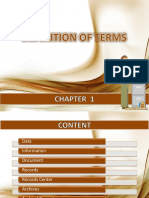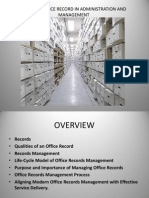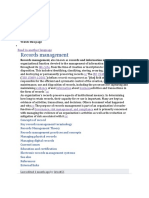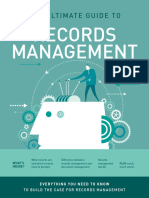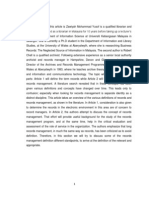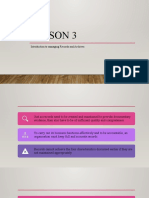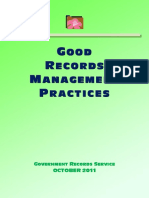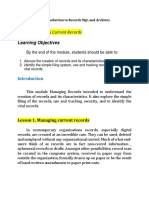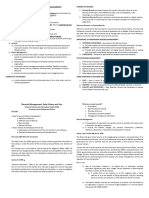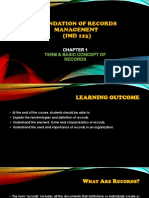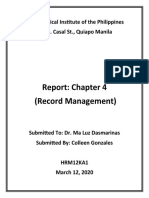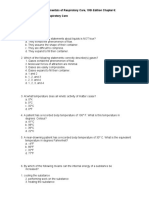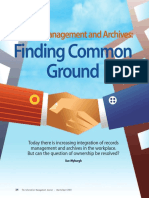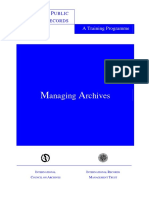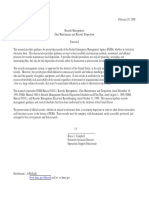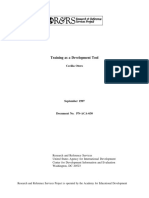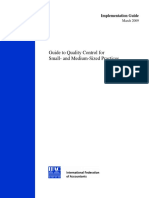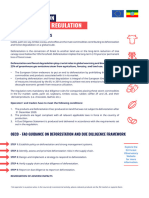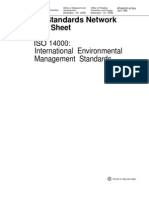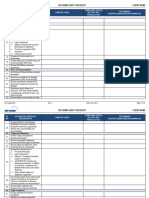0% found this document useful (0 votes)
124 views15 pagesWBGRMRoadmap 005 Part 3 RMOverview FINALPDF
This document provides an overview of key records management principles and practices:
- It defines what a record is, explaining that records serve as documentary evidence of actions and decisions.
- It describes the purpose of records management as ensuring records remain authentic, safe, and usable over time to support organizational effectiveness, efficiency, accountability and transparency.
- It outlines some basic records management concepts like the differences between data, information and evidence, and the various forms records can take, both physical and electronic.
Uploaded by
ERMIYAS TARIKUCopyright
© © All Rights Reserved
We take content rights seriously. If you suspect this is your content, claim it here.
Available Formats
Download as PDF, TXT or read online on Scribd
0% found this document useful (0 votes)
124 views15 pagesWBGRMRoadmap 005 Part 3 RMOverview FINALPDF
This document provides an overview of key records management principles and practices:
- It defines what a record is, explaining that records serve as documentary evidence of actions and decisions.
- It describes the purpose of records management as ensuring records remain authentic, safe, and usable over time to support organizational effectiveness, efficiency, accountability and transparency.
- It outlines some basic records management concepts like the differences between data, information and evidence, and the various forms records can take, both physical and electronic.
Uploaded by
ERMIYAS TARIKUCopyright
© © All Rights Reserved
We take content rights seriously. If you suspect this is your content, claim it here.
Available Formats
Download as PDF, TXT or read online on Scribd
/ 15




